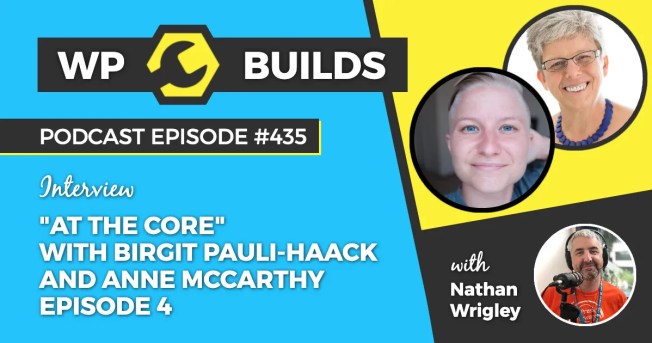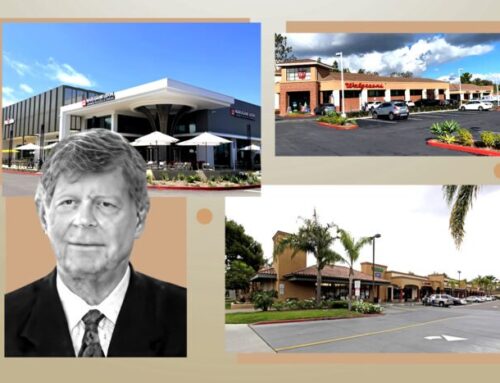Hi,
WordCamp US was a blast, although a four-day WordCamp felt weird. And after day four I was exhausted. I am almost done dealing with jet lag coming back from the nine-hour time difference. Interestingly enough, I saw way more talks than at previous WordCamps and I enjoyed learning new things. I also caught up with many long-time WordPress friends, most of whom I haven’t seen since the pandemic. My heart is full. 
More on WordCamp US below.
I also caught up on a lot of stuff from the rest of the WordPress world, so this weekend edition is really packed.
Wishing you a fantastic weekend.
Yours, 
Birgit
WordCamp US 2025
For this week, I just link some recaps post and collect the WordPress TV links of the talks. More to come over the next weeks or so.
Recap posts
There are already quite a few recap posts about WordPress US published. Here is a selection:
Brett McSherry published a recap: Portland Welcomes WordCamp US 2025: A Community Gathering
So did Rae Morey at The Repository WordCamp US 2025 Wraps in Portland: AI Demos, Student Programs, and What’s Next for WordPress
Andy Fragen shared his photo album: WCUS 2025 in Pictures.
Communications Lead at DreamHost, Annette Irwin, reported extensively from each day in Portland, OR:
- Inside WordCamp US 2025 Contributor Day
- WordCamp US 2025: Showcase Day — Where WordPress Comes to Life
- WordCamp US 2025: Day 3 Recap— Innovation, Energy, and Community
- WordCamp US 2025 Day 4: AI Insights and a Fond Farewell
The 5 Best Things About WordCamp US 2025 by Tess Needham, WordPress.com
Recordings
The WordCamp US Livestream recordings are available on YouTube. The AV team is in the process of uploading single talks to WordPressTV
Here is the list of talks I shared in Weekend Edition 338, now with the links to the recordings on WordPress TV
- Joeleen Kennedy: Modernizing at Scale: How FSE Supports Wikimedia’s Evolving UX
- Josh Bryant: Reimagining WordPress Editing: How We Embedded Gutenberg Into Our Product Ecosystem
- Seth Rubenstein: Block Composability: The Past and The Future
- Stephanie Stelzer: Coding the Magic: A Developer’s Journey Through Aloha
- Mary Ann Aschenbrenner: Moving a Website from Classic to a Block Theme
- Anton Plauche: Building Resilient Interfaces by Embracing Fluid Design
- Jemima Abu: A PHP Developer’s Guide to ReactJS
- Michelle Schlup Hunt: Building Experiences: Design Systems, User Experience, and Full Site Editing
- Tammie Lister: The System is the Strategy
AI was a big topic at WCUS 2025 with about a dozen talks from various angles. My recommendations are:
- For developers, check out Adam Silverstein’s talk, Unlock Developer Superpowers with AI, as he has tested quite a few tools and can give a great rundown about his approach.
- For non-developers, if you need an introduction on how to think about AI, watch John Maeda’s talk Cozy AI Cooking: WordCamp Edition
- If you want to be amazed by what’s happening in other areas of science, I highly recommend Prof. Adam Gazzaley‘s talk, A New Era of Experiential Medicine – AI and the Brain
The full list of talks is available on WordPress TV here.
The recordings of the workshops are not yet available. I’ll share them in a future Weekend Edition.
Major WordPress events in 2026
2026 is still many months away, but you can’t plan soon enough. Save the dates!
| Dates | Name of the Event | Location |
|---|---|---|
| January 23-24, 2026 | WordCamp Nepal | Butwal, Nepal |
| April 8-11, 2026 | PressConf | Phoenix, Arizona, USA |
| April 9–11, 2026 | WordCamp Asia | Mumbai, India |
| April 23-24, 2026 | Checkout Summit | Palermo, Italy |
| June 4-6, 2026 | WordCamp Europe | Krakow, Poland |
| August 16-19, 2026 | WordCamp US | Phoenix, Arizona, USA |
Many more WordCamps are in the early stages. You can check out the schedule on WordCamp.org and also review the WordCamps planned for the rest of 2025.
For the remainder of 2025, I just booked my flight to Gdansk to attend WordCamp Gdynia, September 26 – 28, the first bilingual WordCamp in Poland. And I am contemplating attending WordCamp Pisa in November.
Developing Gutenberg and WordPress
Anne McCarthy and I joined Nathan Wrigley on the 4th episode of the “At the Core” podcast series of WPBuilds. We talked about the Admins design and AI building blocks, the Roadmap for 6.9, the command line for WPAdmin, and Speculative loading. It was a fun, fast-paced conversation.

Aki Hamano released Gutenberg 21.5 and highlighted in his post What’s new in Gutenberg 21.5? (27 August)

 The latest episode is Gutenberg Changelog 119—WordPress 6.8.2 and 6.9, Gutenberg 21.1, 21.2, and 21.3 Releases with Tammie Lister.
The latest episode is Gutenberg Changelog 119—WordPress 6.8.2 and 6.9, Gutenberg 21.1, 21.2, and 21.3 Releases with Tammie Lister.

If you are listening via Spotify, please leave a comment. If you listen via other podcast apps, please leave a review. It’ll help with the distribution.
Sarah Norris and I recorded the next episode of the Gutenberg Changelog (#120) and we chatted about WordCamp US, Developer Blog updates, Gutenberg 21.4 and 21.5, and also the discussion on needing more blocks in the editor. The episode will land over the weekend at your favorite podcast app.

Plugins, Themes, and Tools for #nocode site builders and owners
In her post on the WooCommerce Developer Blog, Stephanie Pi walks you through the updates coming to WooCommerce 10.2. Get ready for the Product Collection Carousel and Bloc, simplified templates, a faster Cart Block, improved taxonomy filters, and so much more. Beta 2 is scheduled for September 8th, and the final release drops on September 16th, 2025.

Wes Theron explains in this video how to work with WordPress templates. You’ll learn the difference between pages and templates in WordPress and how templates control the layout and structure of your pages—including headers, footers, and content—without affecting the content itself. Theron explored how editing templates impacts all pages using them, and showed practical examples using the Pages Template, Single Posts Template, All Archives Template, 404 Template, and your homepage.
Ajit Bohra, Lubus, announced that their open-source Tabs Block is now available in the WordPress repository. Users can create horizontal or vertical tabs directly inside the WordPress Block Editor. Documentation can be found on GitHub Wiki

Kevin Batdorf published the Fit To Width block in the WordPress repository. The block is used for displaying each line of text at full width, no matter the length of the text.

Ryan Welcher released v4.3.0v of his Advanced Query Loop block in the WordPress repository. The update introduces a new post exclusion tool, a completely overhauled Post Meta Queries UI, and a new option for Meta Type.
Theme Development for Full Site Editing and Blocks
Justin Tadlock posted his take on the overall question: Why WordPress Core needs more blocks. He used to support keeping WordPress lean, but block themes changed everything. Now theme builders have way fewer tools compared to before—you can’t just include breadcrumbs, accordions, or icons without finding specific blocks for them. When users don’t have the right blocks installed, they get ugly error messages. He wants WordPress to include more core blocks like tabs, icons, and accordions so theme creators can actually build what they envision without hitting brick walls. What do you think? Leave a comment on Tadlock’s post or on the GitHub issue: New Block additions for the Block Library.
In January, Arun R Shenoy held a talk at WordCamp Kolhapur with the title Crafting Attractive Block Themes Using the Block Editor Alone. The recording is now online on WordPressTV. Shenoy explored “minimalist design and the capabilities of the Block Editor. No coding or complex tools—just the editor and your creative vision.” He explained the basics for those who haven’t used the Site Editor yet and want to learn more. The slidedeck is also available online.

Building Blocks and Tools for the Block editor
The head of engineering at The Code Company, Zac Hickson took a look at the question: Is The WordPress Interactivity API Enterprise-Ready? After a year of testing, they found it’s good to go since WordPress 6.5, making things easier by cutting down technical debt and boosting performance while sticking to the WordPress ecosystem. It handles standard interactive bits pretty well, but you’ll want to plan carefully for those trickier apps. It’s perfect for teams that live and breathe WordPress and want a simpler front-end setup.
The article takes a look at the WordPress Interactivity API by testing it out in real-life client projects. It dives into how ready it is technically, compares its performance against React, Vue, Alpine.js, and jQuery, and shares some cool case studies, like multi-site subscription systems and interactive camera demos. Plus, it gives some tips on how to implement it and some advice on when to pick this API over the others. The whole analysis is all about figuring out how doable this is for organizations that are all about WordPress.
Author Paulo Carvajal‘s new guide, Mastering Complex Attributes in WordPress Blocks: Handling Objects, Arrays, and Nested Data, teaches developers how to work with complex data in block attributes beyond simple text and toggles. It covers arrays for repeatable content like galleries, objects for grouped settings, and nested data structures. The tutorial shows code examples for managing state properly, validating data, and handling performance issues. It explains how to create sophisticated blocks like testimonial sliders while keeping the editing experience user-friendly and avoiding common pitfalls with state management.
WordPress Developer Blog
Troy Chaplin continues sharing his experience, his workflow and plugin setup on the WordPress Developer Blog with two articles:
- Refactoring the Multi-Block Plugin: Build Smarter, Register Cleaner, Scale Easier
Refactor your multi-block plugin with a cleaner structure, support for all block types, and smarter registration, bundling, and asset handling. - Implementing Namespaces and Coding Standards in WordPress Plugin Development
Add namespacing, autoloading, and linting to your multi-block plugin for clean, scalable WordPress development.
Don’t miss a new article ever again. Subscribe to the WordPress Developer Blog!
Justin Tadlock and Abar Thakor discussed How to Start Contributing to the WordPress Developer Blog (Even If You’re New) in an episode on the OpenChannels network. Don’t wait to be an expert before contributing to the WordPress Developer Blog. Even beginners can share small solutions, guides, or case studies they’ve built. Start by browsing existing posts for inspiration, then share your idea on the GitHub discussion panel. The editorial team is super helpful and will work with you to polish your writing. Your beginner perspective might be exactly what other new developers need to see.
Artificial intelligence (AI) and WordPress
A new AI Tool, Automattic Telex, makes it easier to build Blocks for the block editor. Matt Mullenweg announced it in his keynote.
Rae Morey, The Repository, reports on the reception around the Interwebs. Automattic Debuts Telex, Bringing AI-Powered “Vibe Coding” to Gutenberg Blocks.
Sarah Perez at TechCrunch also picked up the story: WordPress shows off Telex, its experimental AI development tool
Don’t be shy, give it a whirl, share your feedback, and leave a comment.
Grzegorz Ziółkowski released the Composer package wordpress/abilities-api. WordPress developers can now test the Abilities API before it officially launches in WordPress 6.9. The Abilities API creates a common language for all WordPress components to define their functionalities, making it easier for both humans and machines to understand. By using this shared language, plugins, and themes can help AI solutions find, interpret, and use capabilities across the WordPress ecosystem. You can learn more about this new feature on the Make blog of the AI Team.
What’s new for WordPress Playground
In this episode on the OpenChannels Learn How WordPress Playground Revolutionizes Local Development Testing and Learning Abha Thakor and Fellyph Cintra discuss WordPress Playground, its features, accessibility, and impact on developers and users. One new feature is the Playground Command line interface (CLI). You can use the playground CLI to spin up a WordPress instance directly from your plugin or theme folder by using with the --auto-mount flag with the command. This gives you a complete development environment in seconds.
npx @wp-playground/cli server --auto-mount
Recent updates also added a demo content for the plan Playground site, when accessing playground.wordpress.net

Questions? Suggestions? Ideas?
Don’t hesitate to send them via email or
send me a message on WordPress Slack or Twitter @bph.
For questions to be answered on the Gutenberg Changelog,
send them to changelog@gutenbergtimes.com







